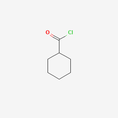Introduction
Methyl hydrogen polysiloxane, also known as methylhydrosiloxane fluid, is a versatile silicone - based polymer. It is a clear, colorless liquid with a characteristic silicone - like odor. Structurally, it consists of repeating siloxane units with methyl and hydrogen groups attached to the silicon atoms. This unique molecular structure endows it with a wide range of remarkable physical and chemical properties, making it a valuable material in numerous industrial and commercial applications.
Advantages
High Reactivity: The hydrogen atoms in methyl hydrogen polysiloxane are highly reactive. This reactivity allows it to participate in a variety of chemical reactions, such as hydrosilylation reactions. These reactions are widely used in the synthesis of other silicone - based compounds and the modification of organic polymers.
Excellent Thermal Stability: It can withstand relatively high temperatures without significant degradation. This thermal stability makes it suitable for use in high - temperature applications, where it can maintain its physical and chemical properties over a long period.
Low Surface Tension: Methyl hydrogen polysiloxane has a low surface tension, which enables it to spread easily on various surfaces. This property is beneficial for applications such as surface coating, where it can form a thin, uniform film.
Water Repellency: It imparts excellent water - repellent properties to the surfaces it coats. This makes it useful in applications where moisture resistance is required, such as in the treatment of textiles, building materials, and electronic components.
Chemical Inertness: Despite its high reactivity of the hydrogen atoms, the overall molecule is chemically inert towards many common chemicals. This allows it to be used in environments where exposure to different chemical substances is expected.
Applications
Silicone Rubber Modification: Methyl hydrogen polysiloxane is used as a cross - linking agent in the production of silicone rubber. It reacts with vinyl - containing silicone polymers to form a three - dimensional network structure, which improves the mechanical properties, such as hardness, tensile strength, and tear resistance, of the silicone rubber.
Textile Industry: It is applied to textiles to provide water - repellency, softness, and anti - static properties. When used in textile finishing, it can also enhance the durability and wrinkle - resistance of fabrics.
Coating Industry: In the coating industry, methyl hydrogen polysiloxane is used as an additive to improve the surface properties of coatings. It can enhance the gloss, scratch - resistance, and weatherability of coatings, making them more suitable for outdoor applications.
Release Agents: Due to its low surface tension and non - stick properties, it is widely used as a release agent in the manufacturing of rubber, plastic, and composite products. It helps in the easy removal of molded parts from the molds, reducing production time and improving product quality.
Adhesives and Sealants: Methyl hydrogen polysiloxane can be incorporated into adhesives and sealants to improve their adhesion, flexibility, and resistance to environmental factors. It can also enhance the durability of the bonded or sealed joints.
FAQ
Q1: What are the storage conditions for methyl hydrogen polysiloxane?
A: It should be stored in a cool, dry place away from direct sunlight and sources of heat. The container should be tightly sealed to prevent moisture and air from entering, as exposure to moisture can cause the product to react and degrade over time.
Q2: Is methyl hydrogen polysiloxane toxic?
A: In general, methyl hydrogen polysiloxane has low toxicity. However, like any chemical substance, it should be handled with care. Direct contact with skin, eyes, or inhalation of its vapors should be avoided. Appropriate personal protective equipment, such as gloves and goggles, should be worn during handling.
Q3: Can methyl hydrogen polysiloxane be used in food - contact applications?
A: Special grades of methyl hydrogen polysiloxane that meet relevant food - contact regulations can be used in food - contact applications. However, it is crucial to ensure that the specific product used complies with the applicable food safety standards in the target market.
Q4: How can I determine the right amount of methyl hydrogen polysiloxane to use in my application?
A: The appropriate amount depends on the specific application and the desired properties. It is recommended to conduct small - scale tests first to optimize the dosage. You can also consult our technical support team for more accurate guidance based on your specific requirements.
Q5: What is the shelf life of methyl hydrogen polysiloxane?
A: Under proper storage conditions, the shelf life of methyl hydrogen polysiloxane is typically 1 - 2 years. However, it is advisable to check the product's quality before use, especially if it has been stored for an extended period.
Hot Tags: methyl hydrogen polysiloxane uses, China methyl hydrogen polysiloxane uses manufacturers, suppliers, factory, pharmaceutical intermediate innovation, bulk pharmaceutical intermediates, organic pharmaceutical intermediates, pharmaceutical intermediate suppliers, pharmaceutical intermediate vendors, pharmaceutical intermediate research









